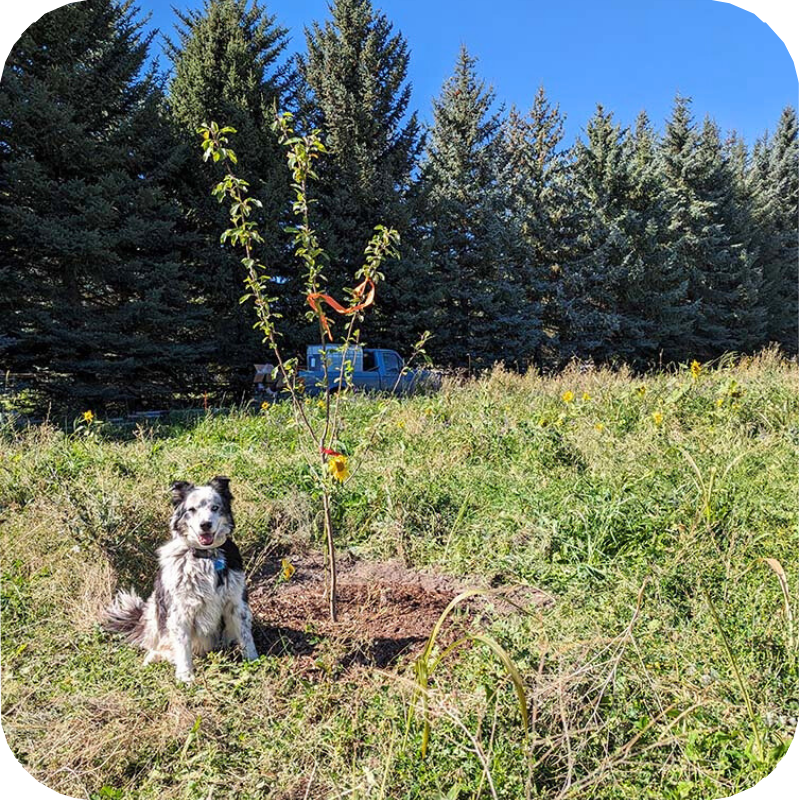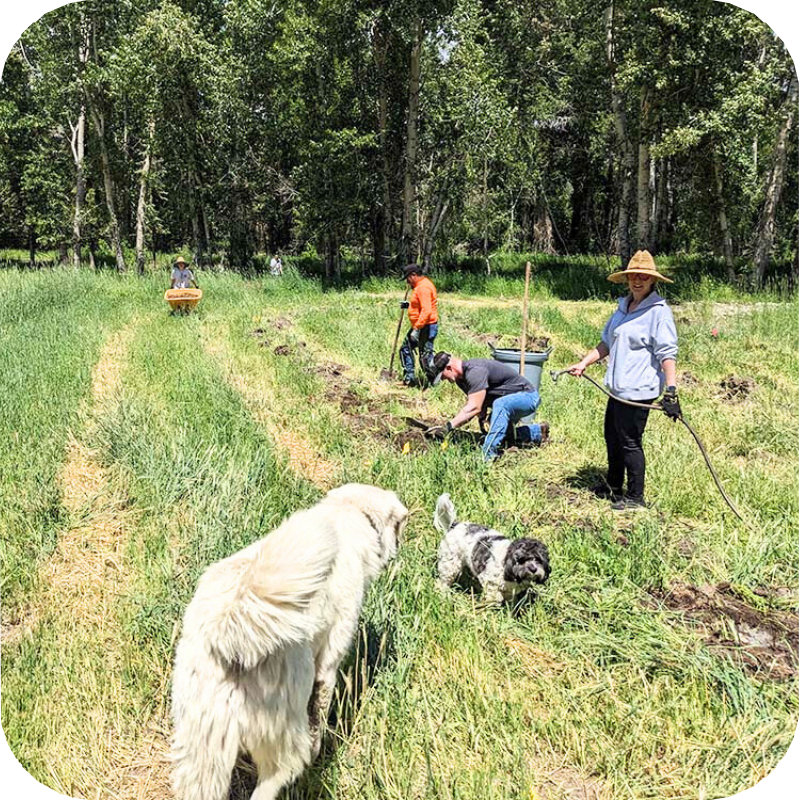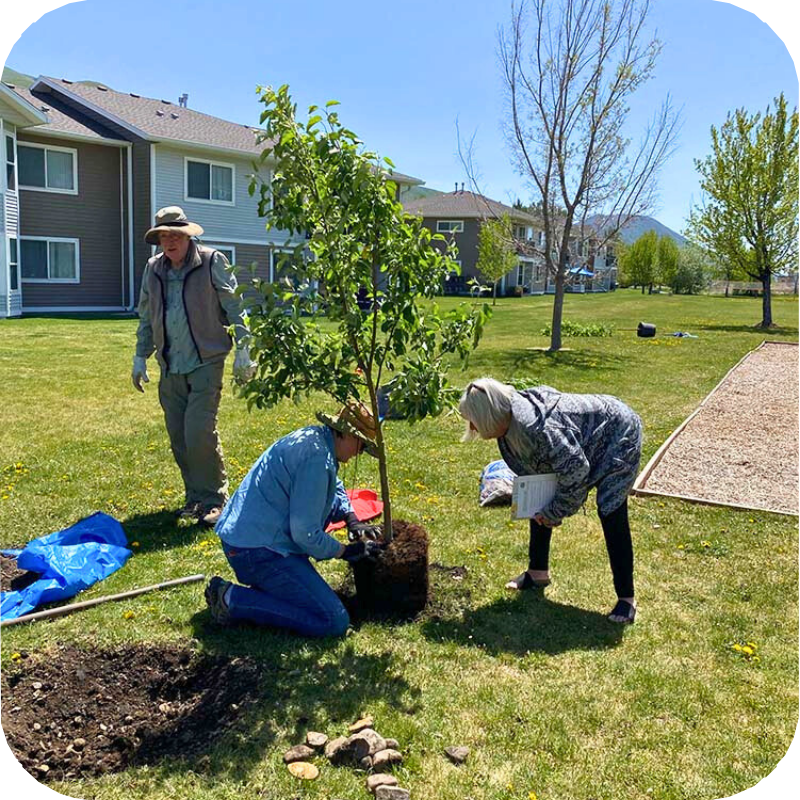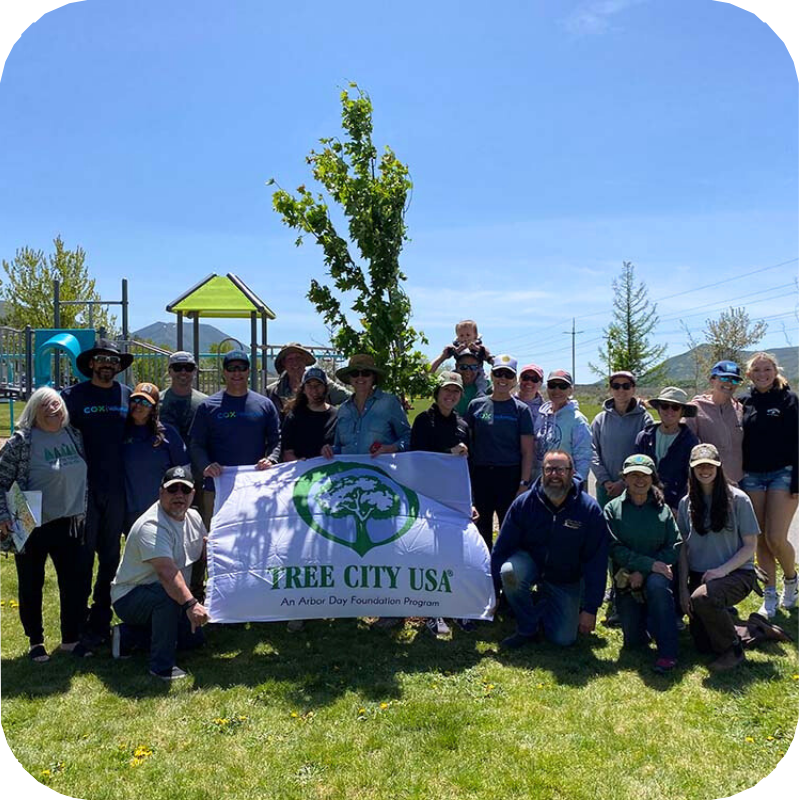Planting a Forest of Food
“Put simply, agroforestry is farming with trees,” explains Brooke Bonner, owner of Drinkers of the Wind Farm. “That can mean anything from a homeowner’s backyard food forest to a large-scale system that integrates tree crops with a traditional cash crop like grain or hay.”
Drinkers of the Wind Farm Agroforestry
For Brooke, agroforestry is about intentionally mimicking the diversity of a natural ecosystem. Her farm has planted over 100 varieties so far, creating a layered agricultural system with plants on the ground, shrubs above them, and a canopy of trees overhead.
“Implementing agroforestry has allowed us to make more efficient use of land that was already impacted by agriculture,” she continues. By incorporating three vertical layers of crops, Drinkers of the Wind produces more from the same agricultural footprint. As Brooke describes it, “We’re turning the same amount of sun, soil, and water into more nutrition for the community than if we were just producing one layer of a single crop in each field.”
But agroforestry isn’t just about maximizing production—it’s also about ecosystem health. At Drinkers of the Wind, the focus is on increasing plant diversity, improving soil health, and working in concert with the land. “I have a vivid memory of visiting the orchard last spring and being stopped in my tracks by the cacophony of buzzing from all the insects feasting on our flowering trees and cover crops,” Brooke recalls. “Three years before, that exact spot had been nothing but compacted, bare soil and noxious weeds. It was a night-and-day difference.”
Student-led Agroforesty Projects
Agroforestry isn’t limited to farms. Over the past year, Future Roots, as part of the Wood River Valley Forest Collaborative, has coordinated several tree-planting projects in both natural and urban environments. At Balmoral/Kiwanis Park in Hailey, 30 volunteers planted 12 trees around the playground to provide shade, reduce noise pollution, and offer fresh apples to neighborhood families. This project, funded by Cox Communications, was a collaboration with The Arbor Day Foundation and the City of Hailey. Additionally, 12 volunteers planted over 1,000 Douglas fir seedlings in the Ross Fork Fire burn area to aid biodiversity recovery, prevent erosion, and increase carbon sequestration.
This year, Future Roots is partnering with the Blaine County School District on two tree-planting projects across three school sites. At Hailey Elementary and Alturas Elementary, community volunteer events will add trees—including fruit trees—to provide shade and serve as sound and air pollution barriers due to the schools’ proximity to Friedman Memorial Airport. Additionally, Future Roots is working with stakeholders in hopes of planting an orchard onsite at the Wood River Middle School, alongside the construction of a greenhouse.
A Food Forest at the Sun Valley Community School
At Sun Valley Community School, they plan to expand their campus garden with agroforestry by adding native shrubs, vines, grasses, and forbes species, as well as several fruit trees that thrive in colder environments. Their goal is to create a system that nurtures curiosity, nourishes the health and wellness of students, and gives back to the nature surrounding the garden.
“Between our campus kitchen and the meals in residence hall, the school serves over five hundred meals a week,” says teacher Sarah White. “The inspiration for the agroforestry project comes from the Community School’s culture, part of which is gathering together to enjoy a meal. Through student harvests, we hope to bring food circularity into our lunch room and residence hall kitchens…and educate students about the power and importance of local food production.”
The garden and forest are a living classroom for students, including young scientists performing soil quality tests and tracking plant growth, world language classes creating cultural dishes with food from the garden, and more.
“We hope to educate students and our community about the importance of being connected to the food we eat and the environment around us,” adds Sarah. “The emergence of a campus garden will enrich learning opportunities for students and support connection to plants, food, and the broader community.”
From restoring agricultural lands, inspiring students, and improving public spaces, agroforestry offers a range of benefits. As these projects take root and grow, they will provide shade, cleaner air, and increased biodiversity. By integrating trees into both agricultural and urban landscapes, these projects are taking steps towards a healthier, more resilient environment in the Wood River Valley. Do you know of other agroforestry projects in the Wood River Valley? Let us know by emailing locallygrown@futureroots.org.








